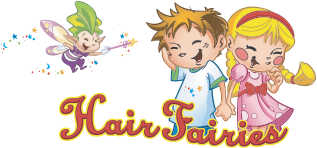Head lice is a common childhood predicament that raises many questions: Should schools notify parents about lice outbreaks? What are the established protocols for managing head lice within schools? How contagious are lice in a school setting, and what guidelines do health organizations provide for their control?
From strict no-nit mandates to more lenient approaches prioritizing education over exclusion, it's clear there is no one-size-fits-all solution. Let’s explore the current recommendations about lice in schools and what you need to know as a parent.
Impact of Head Lice on Children and Families
The impact of a head lice infestation extends beyond physical discomfort. It can have emotional and social implications for children, leading to stress and family challenges.
Head lice infestations can be emotionally distressing for children. The persistent itchiness and discomfort can cause anxiety and irritability. Some children may feel embarrassed or ashamed, particularly if their peers tease or exclude them. This can lead to feelings of isolation and may affect a child's self-esteem and confidence.
Moreover, the misconception that head lice result from poor hygiene can add to this distress (even though lice can infest anyone's hair, regardless of cleanliness). Educating children and adults about this is essential to prevent stigmatization and bullying.
For families, dealing with a head lice infestation can be stressful and challenging.
Parents may feel guilt or embarrassment, and treating lice can be time-consuming and frustrating. There's also the worry of preventing the spread to other family members or recurring infestations.
Additionally, parents may face the challenge of reassuring and comforting their children, dispelling any fears or misconceptions they might have. Balancing this with the practical aspects of managing an infestation – such as washing bedding, clothing, and personal items – can take a toll on the family's time and resources.
Despite these challenges, it's important to remember that head lice are a common issue many families face. They're not a reflection of cleanliness or parenting skills.
If you're dealing with a head lice infestation, seek professional help. Services like Hair Fairies provide expert advice and effective treatment options, easing the burden and helping you navigate this challenge with understanding and care.
School Policies on Head Lice

Schools across the country have varying policies regarding managing head lice. These policies range from stringent no-nit rules to more lenient approaches prioritizing a child's education over temporary health concerns.
Variations in policies by school district or region
Policies can vary significantly by district or region.
For example, New York City schools enforce a "No Head Lice" policy, barring students with live lice from attending until they are lice-free. On the other hand, the California Department of Public Health provides guidance that a child infested with head lice should not be excluded from school.
Parents need to familiarize themselves with their local school district's policy on head lice. If your child has head lice, it's essential to inform the school and understand the steps needed for your child to return to class.
Shifts in school policies
Some schools enforce a strict "no nit" policy, where students cannot return to school until all nits (lice eggs) are removed from their hair. Other schools have a "no live lice" policy, allowing students to return once there are no longer any live lice in their hair.
However, this approach has shifted in many districts based on recent research and guidance.
The Centers for Disease Control and Prevention (CDC), American Academy of Pediatrics (AAP), and National Association of School Nurses argue that "no nit" policies are unjustified and lead to unnecessary absences. They emphasize that nits are not easily transferred from person to person, and the primary concern should be the management of live lice.
New Guidance for Schools
The AAP recently updated its guidelines on head lice management in schools. They recommend safe, age-appropriate, and easy-to-use treatments, which can rapidly rid the individual of live lice and nits.
The CDC and other health organizations advise that students diagnosed with live head lice should not be dismissed early from school. They can go home at the end of the day, be treated, and return to school without posing a significant risk of spreading lice.
Traditional policies are being reconsidered due to recent research and guidance. It's argued that these policies lead to unnecessary absences and stigmatization, as nits are not easily transferred from person to person. The primary concern should be the management of live lice.
However, it's important to note that some organizations like the National Pediculosis Association still recommend the No Nit Policy as a public health standard intended to keep children lice-free, nit free, and in school.
These changes reflect a shift towards evidence-based practices that balance the need to control the spread of lice with the importance of minimizing disruption to children's education.
What Parents Should Know and Do

Navigating a head lice infestation can be challenging. Knowing how to detect, treat, and prevent head lice and how to communicate with your child's school can make the process less daunting.
Detecting and treating head lice
Early detection is crucial in managing head lice.
Regularly check your child's hair for signs of lice, such as itching or small white nits attached to the hair shaft close to the scalp.
If you find lice, it’s essential to start treatment immediately. There are several options for treatment: over-the-counter, prescription, and natural remedies.
We have several resources to help you understand which treatment is best for you and your family:
- Over-the-Counter vs. Prescription: Head Lice Treatment Options
- Safeguard Your Kids with Natural Lice Treatments
- Unveiling DIY Lice Treatments That Actually Work
- Natural vs. Chemical Lice Treatment
Communicating with your child’s school
If your child has head lice, notify the school immediately. It's also important to understand the school's lice policy so you can take the necessary steps for your child to return to class. Policies vary by district or region, so always check with your local school administration.
Maintain open communication with the school throughout the process. This helps to protect other children and prevents the further spread of lice.
Preventative measures
Read our guide – Natural Ways to Prevent Head Lice – to learn more about steps you can take.
But here is a quick breakdown of what you can do to prevent lice:
- Encourage your child to avoid head-to-head contact during play and other activities.
- They should also avoid sharing clothing, hair accessories, combs, brushes, or towels.
- Regularly cleaning items in contact with an infected person's head, such as bedding or stuffed animals, can also help prevent the spread of lice.
Dealing with head lice can be stressful, but it's a common issue many families face. Stay informed, stay vigilant, and know that resources are available to help you navigate this challenge.
Working Together: Parents, Schools, and Professionals

Ultimately, dealing with head lice is a part of childhood that should be approached with compassion and practicality.
By educating ourselves about head lice, staying informed about school policies, and seeking professional help when needed, we can navigate this challenge with confidence and care.
Remember, you're not alone in this journey. Resources like Hair Fairies are available to provide expert advice and effective treatment options to ease the burden and guide you every step of the way.
Together, we can create a supportive environment that prioritizes the well-being of our children above all else.



Comments (0)
There are no comments for this article. Be the first one to leave a message!